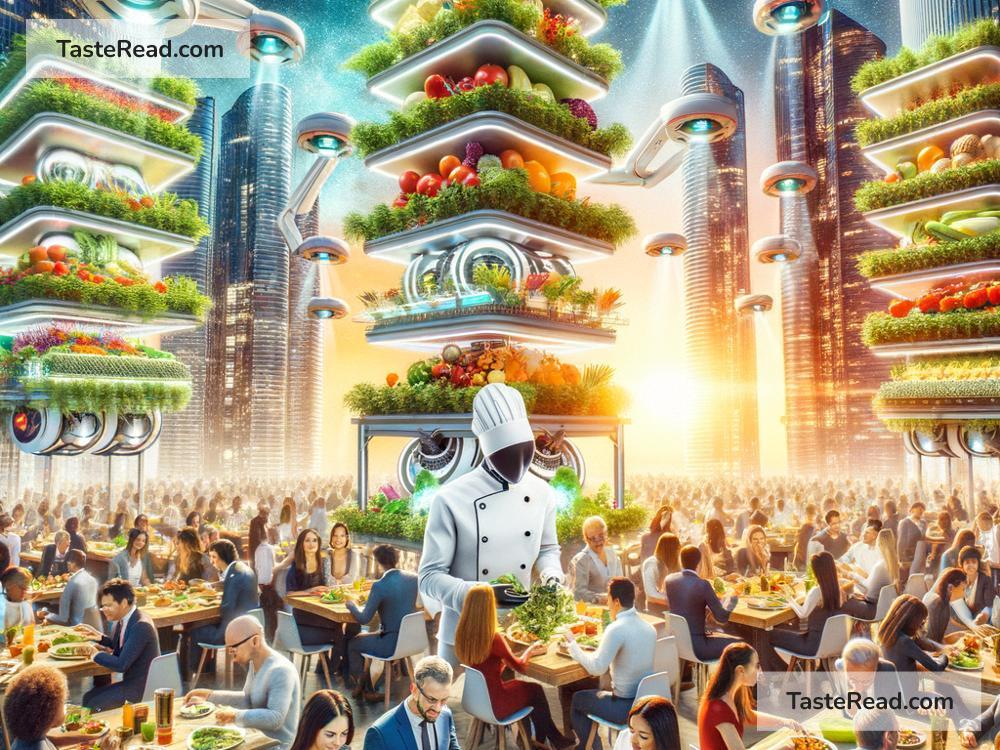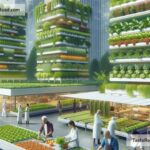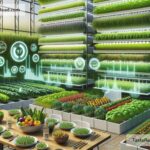The Future of Food: A Journey Towards Holistic Global Collaboration
Food is one of the most essential parts of our lives. It feeds not only our bodies but also connects cultures, communities, and families. However, as the global population grows, climate change worsens, and resources become strained, the way we produce, consume, and think about food needs to change. To ensure everyone in the world has access to healthy, sustainable, and affordable food, we must embrace innovative solutions, work together, and think about food in a more holistic way.
The Challenges We Face
The future of food is tied to global challenges—some of them obvious, others less visible. By 2050, the world’s population is expected to reach nearly 10 billion. Feeding such a large number of people puts pressure on agriculture, water supplies, and energy systems. Today’s food supply chains are already stretched. Millions of people still experience hunger, while a large portion of the world also struggles with obesity and poor nutrition.
Climate change is another major factor. Rising temperatures, shifting weather patterns, droughts, floods, and soil degradation are making farming harder. Crops that thrive today may not grow well tomorrow. Additionally, overfarming and deforestation destabilize ecosystems, leading to biodiversity loss. We rely heavily on just a few major crops like rice, wheat, and corn for most of our calories, which leaves us vulnerable if they fail.
Another important issue is inequality. In wealthier countries, food waste is alarmingly high. In poorer regions, access to farming tools, education, and markets remains limited. These gaps highlight the need for holistic collaboration—not only within nations but across all borders.
Innovations That Will Shape Tomorrow’s Food
The challenges are serious but not hopeless. Around the world, scientists, farmers, entrepreneurs, and governments are working on exciting solutions to create a better future for food.
-
Alternative Proteins: Traditional meat production requires a lot of land, water, and energy, and contributes to greenhouse gas emissions. Companies are now creating plant-based meats, lab-grown meat, and insect-based foods. These alternatives can significantly reduce the environmental impact of protein production while providing nutritious options.
-
Vertical Farming: Vertical farms grow crops in stacked layers, often using technology like LED lights and hydroponics (growing plants without soil). These farms can be set up in urban areas, reducing transportation costs and waste. They also use far less water and don’t require pesticides.
-
Climate-Resilient Crops: Scientists are developing crops that can withstand extreme weather conditions. These genetically modified or selectively bred plants could ensure food security even in regions hit hardest by climate change.
-
Precision Agriculture: Technology like drones, sensors, and artificial intelligence is helping farmers manage their land more efficiently. Precision agriculture allows farmers to monitor soil health, water needs, and crop growth in real time, reducing waste and maximizing yield.
-
Food from the Ocean: Seaweed farming is gaining attention as a sustainable food source. It grows quickly, doesn’t require freshwater or fertilizers, and is highly nutritious. Ocean-focused agriculture could provide new ways to feed the world.
-
Reducing Food Waste: Apps, AI tools, and community programs are helping tackle food waste. From redistributing surplus to improving storage methods, reducing food waste is key to a sustainable food system.
The Importance of Holistic Collaboration
While these innovations offer hope, they cannot succeed in isolation. The future of food depends on holistic global collaboration—a mindset where nations, industries, and individuals work together to address interconnected issues.
For example, sharing technology and research can help countries with fewer resources build resilient food systems. Richer nations can assist poorer ones by investing in education, infrastructure, and sustainable practices for local farmers. Community-led projects, like seed-sharing initiatives, can build connections and promote biodiversity.
Governments also play a crucial role. Policies that prioritize sustainable farming, support small-scale farmers, and incentivize eco-friendly practices are essential. Global organizations, such as the United Nations, can facilitate discussions that align goals across borders.
Businesses and consumers are equally vital partners in this process. Food companies can create affordable products using sustainable methods. Consumers, meanwhile, can make better choices—buying local, minimizing waste, and being mindful of the impact their diets have on the planet.
Education is another powerful tool. Schools can teach children about sustainable farming, healthy eating, and environmental protection. Media can spread awareness about food-related issues, inspiring individuals to take action.
A Shared Vision for the Future
Imagine a future where every child, adult, and senior has access to nourishing food. A future where farmers and scientists work side by side to solve problems. A future where countries share ideas, technologies, and resources to make farming smarter, cleaner, and less harmful to the planet.
This vision is achievable, but only if we commit to collaboration. Food is more than something we eat—it’s deeply connected to our health, environment, and economies. By working together, we can transform food systems into a force for good, ensuring no one is left behind.
So, the next time you eat a meal, think about where your food comes from and how it impacts the world. Small changes, like supporting local farmers, reducing waste, or exploring sustainable options, can contribute to the global effort. Together, we can create a future where food is abundant, equitable, and sustainable for generations to come.


